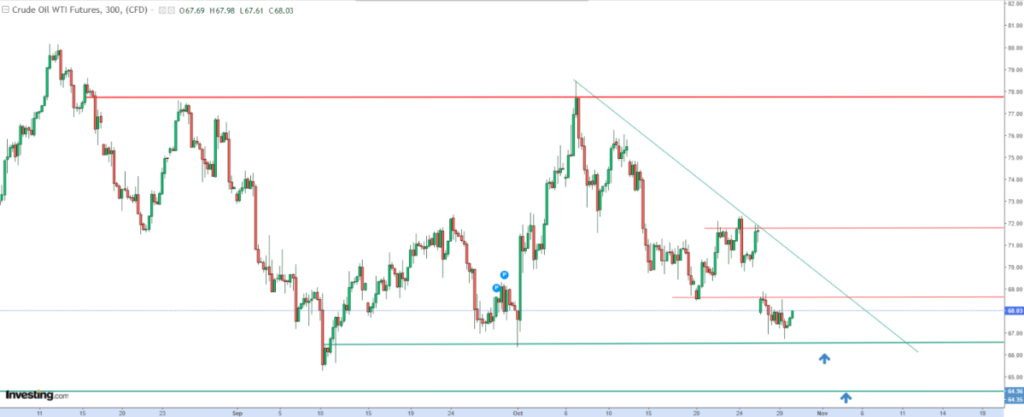Crude oil markets are facing potential volatility intensified by ongoing geopolitical tensions and internal disagreements within OPEC+. Traders must navigate these turbulent waters, as prices remain precariously situated near critical support levels. With a potential breakdown below $67 looking increasingly likely, understanding the complex pressures driving these market dynamics is essential. As the situation evolves, traders are advised to remain agile, paying close attention to any developments from the Middle East and OPEC+ with the November meeting on the horizon. In the context of this shifting landscape, actionable trading strategies could provide vital insights for capitalizing on market fluctuations.
Recent geopolitical events in the Middle East have shifted oil valuations and contributed to market jitters. Notably, Israel’s restrained military response to Iranian provocations appears to signal a potential de-escalation; however, the ongoing tensions in the region keep traders cautious. Iran’s substantial role in the global oil market, producing nearly 4 million barrels per day, highlights the risk of disruptions in supply chains due to escalated conflicts. The broader Middle East, accounting for about one-third of the world’s oil supply, serves as a reminder that any significant developments in this area could have far-reaching implications for the market.
On the organizational front, OPEC+ is experiencing internal fractures that further complicate the oil market’s outlook. In a recent OPEC+ meeting, Saudi Arabia issued strong warnings to member states, especially Iraq, about adhering to production limits. The concern is that if some members fail to comply, Saudi Arabia may increase its output significantly, potentially flooding the market with an additional 9 million barrels per day. This scenario poses a serious risk of driving prices below $60 per barrel for both West Texas Intermediate (WTI) and Brent crude, especially as discussions intensify ahead of the upcoming November meeting.
As of now, WTI crude prices have dipped below the critical $70 threshold, with support levels hovering around $67. If this support fails, the oil market may see prices decline toward a long-term low of $64 per barrel. However, if demand returns, there could be a bounce back, with a near-term resistance level positioned at $72. This delicate balance between support and resistance underlines the market’s precarious nature, as traders seek to ascertain the direction of prices in light of geopolitical and organizational developments.
In light of these complexities, crude traders must monitor both technical indicators and global headlines closely. The interplay between geopolitical risks and OPEC+ decisions is likely to shape the market trajectory in the near term. As traders prepare for potential volatility, the importance of adaptable trading strategies becomes crucial for making informed decisions during rapid market movements. Staying tuned into developments from both the Middle East and OPEC+ will be key as the market navigates this unpredictable phase.
In conclusion, while crude oil prices are experiencing significant downward pressures due to geopolitical tensions and OPEC+ discord, a comprehensive understanding of the situation is vital for successful trading strategies. With the potential for prices to dip below critical support levels, traders should remain vigilant as the November meeting approaches and carefully evaluate the impact of international events. As the situation evolves, having access to innovative tools and resources could provide invaluable assistance in identifying lucrative trade opportunities amidst market volatility.

